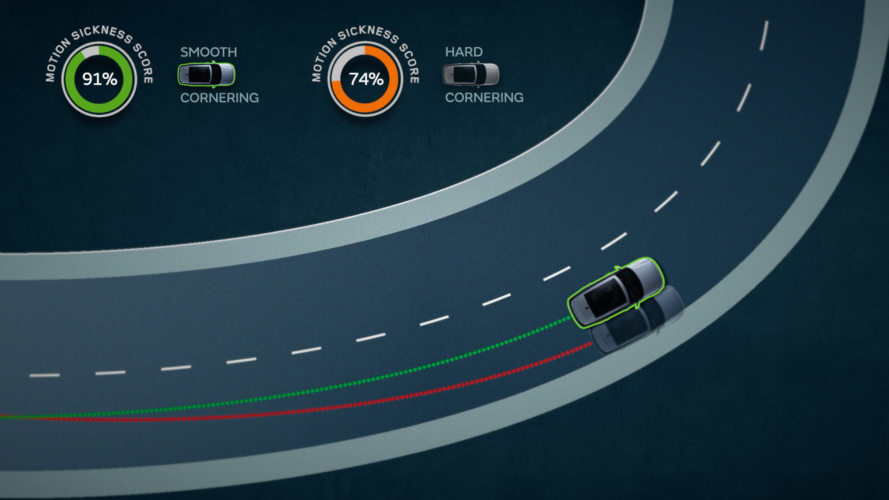Thought to affect more than 70 per cent of people, motion sickness is typically caused when the eyes observe information different from that sensed by the inner ear, skin or body – commonly when reading on long journeys in a vehicle.
Using the new system, acceleration, braking and lane positioning – all contributory factors to motion sickness – can be optimised to avoid inducing nausea in passengers.
During the first phase of the project, engineers created an algorithm that generated a personalised ‘wellness score’ for each passenger.
Based on 15,000 miles of motion sickness data, this calculated how susceptible individual drivers and passengers are to feeling car sick, using biometric sensors that record physiological signals. Armed with this data the vehicle will know when a passenger or driver is becoming motion sick before they do.
This can then be combined with motion and dynamics data and used to automatically personalise a vehicle’s driving behaviour and cabin settings. JLR claims that such an approach could be used to reduce the impact of motion sickness by up to 60%.

Experts at the car-maker's specialist software engineering facility in Shannon have now implemented that score into self-driving software which combines 20,000 real-world and virtually-simulated test miles to calculate a set of parameters for driving dynamics to be rated against.
Advanced machine learning then ensures the car can optimise its driving style based on data gathered from every mile driven by the autonomous fleet.
Dr Steve Iley, Jaguar Land Rover Chief Medical Officer, said: “Solving the problem of motion sickness in driverless cars is the key to unlocking the huge potential of this technology for passengers, who will be able to use the travelling time for reading, working or relaxing.”




Project to investigate hybrid approach to titanium manufacturing
What is this a hybrid of? Superplastic forming tends to be performed slowly as otherwise the behaviour is the hot creep that typifies hot...